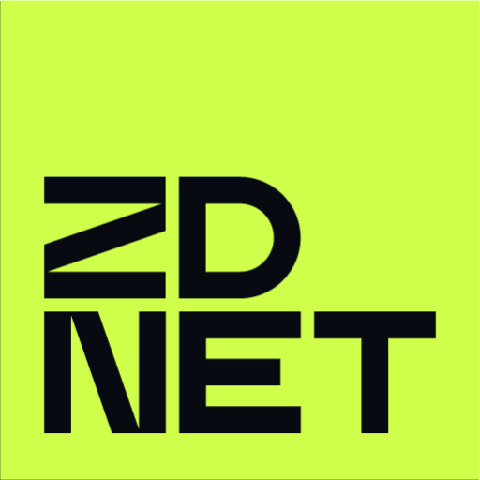ในโลกยุค WFH มีเครื่องมือหลายตัวที่บูมขึ้นมา ไม่ว่าจะเป็น Zoom, Teams, Google Meet หรือ Slack แถมวงการแชท/ประชุมออนไลน์กำลัง converge เข้าหากัน (ตัวอย่างล่าสุดคือ New Gmail ที่มีระบบแชท/ประชุมในตัว)
วันนี้มาเจอบทความเรื่องนี้ใน ZDNet วิเคราะห์ไว้น่าสนใจหลายอย่าง ว่าธุรกิจนี้จะไปอย่างไรต่อ
 ZDNET
ZDNET ประเด็นแรกที่น่าสนใจคือ การสื่อสารแบบ chat/video มันกำลัง converge เข้าหากัน ซึ่งจะรวมไปถึง workplace collaboration ในมิติอื่นด้วย เช่น ไฟล์เอกสาร หรือ อีเมล
ไมโครซอฟท์ได้เปรียบที่สุดเพราะมีทุกอย่างครบ (Teams, SharePoint, Outlook, Office 365) แต่จากในข่าวของกูเกิลล่าสุด ก็เดินตามรอยเดียวกัน (Google Meet, Google Chat, Google Drive, Gmail, G Suite)
ปัจจัยเรื่อง convergence โดยธรรมชาติของเนื้องาน ย่อมทำให้ผู้เล่นรายย่อยที่มีผลิตภัณฑ์เฉพาะอย่าง เช่น Zoom หรือ Slack เสียเปรียบ ต้องรอดูว่าระยะยาวจะอยู่รอดได้ไหม (การที่ Slack จับมือกับ Amazon ก็มีคนวิเคราะห์ว่าสุดท้ายอาจต้องขายให้ Amazon)
ประเด็นที่สองคือ ทิศทางของฟีเจอร์ในซอฟต์แวร์เหล่านี้ มีบางอันที่น่าสนใจ ขอคัดมาจดไว้
ระบบ analytics ที่วิเคราะห์การใช้ห้องประชุม (ในเชิงกายภาพ) เพื่อวางแผนทำความสะอาด และวางแผนการขยายออฟฟิศได้ด้วย คนที่ทำแล้วคือ Cisco Webex
WebEx has expanded their product during the pandemic to allow tapping “into deep insights about meeting room usage to influence not only cleaning schedules but also how a company plans the future office layout”
แก้ปัญหาการถกเถียงในห้องประชุม มีข้อมูลและไอเดียมากมาย แต่ประชุมจบแล้วก็หายสาบสูญไป ด้วยการทำ text transcription ด้วยพลัง AI
synchronous meetings have a “knowledge evaporation” problem, with much of the conversations, ideas, and decisions lost to the air during voice/video conversations especially, except maybe for some note taking which rarely gets distributed after.
the ability to preserve and record what happened in the meeting to be shared openly for consultation afterwards.
This is a vital feature for remote workers so they don’t feel isolated and keeps them plugged into what is taking place in the business by seeing what happened in other meetings.
การวัดความสนใจของผู้เข้าร่วมประชุมออนไลน์ ที่ทำได้ยากกว่าการประชุมแบบจบหน้า อันนี้ Adobe มีแล้ว
WIth the greater difficulty in seeing who is actually engaged in a meeting when it’s not physical, it has become useful to know who is engaging for a variety of reasons, including managing the flow and effectiveness of the session.
Breakout Rooms หรือการประชุมห้องย่อย-กลุ่มย่อย ซึ่งทำได้ง่ายในทางกายภาพ (เช่น แยกมุมห้องไปนั่งคุยกัน) และเป็นฟีเจอร์สำคัญที่ใช้ในการเรียนหรือการอบรม แต่ในการประชุมออนไลน์ยังทำได้ไม่ง่ายขนาดนั้น (Zoom/Teams มีแล้ว)
For education and hands-on corporate events, being able to partition an audience into virtual rooms during a meeting to accomplish a task or wait for a key decision to be made can be invaluable.
รูปแบบ UI ที่ไม่ใช่ตาราง (กริด) แสดงหน้าทุกคน ที่ประชุมนานๆ แล้วมันเหนื่อย ตัวอย่างนวัตกรรมในด้านนี้คือ Microsoft Teams มี Together Mode แต่ยังไม่เคยลองใช้จริงๆ ก็ไม่รู้ว่าใช้แล้วจะเป็นอย่างไร
Post-“grid” meeting modes. The video grid has grown old and tired after a few short months of remote work.
Real-time translation อันนี้ทุกคนน่าจะเห็นประโยชน์กันหมด เหมือนเราดูคลิปใน Youtube ถ้าให้มี sub-title ยังไงก็เป็นการสื่อสารที่มีประสิทธิภาพมากกว่า ต่อให้มีแปลผิดๆ บ้างแต่ก็ดีกว่าไม่มีเลย
Real-time translation. For global companies, or organizations with people that speak many different languages (common around the world), effectively communicating online can be difficult if the meeting is not in your native language.

